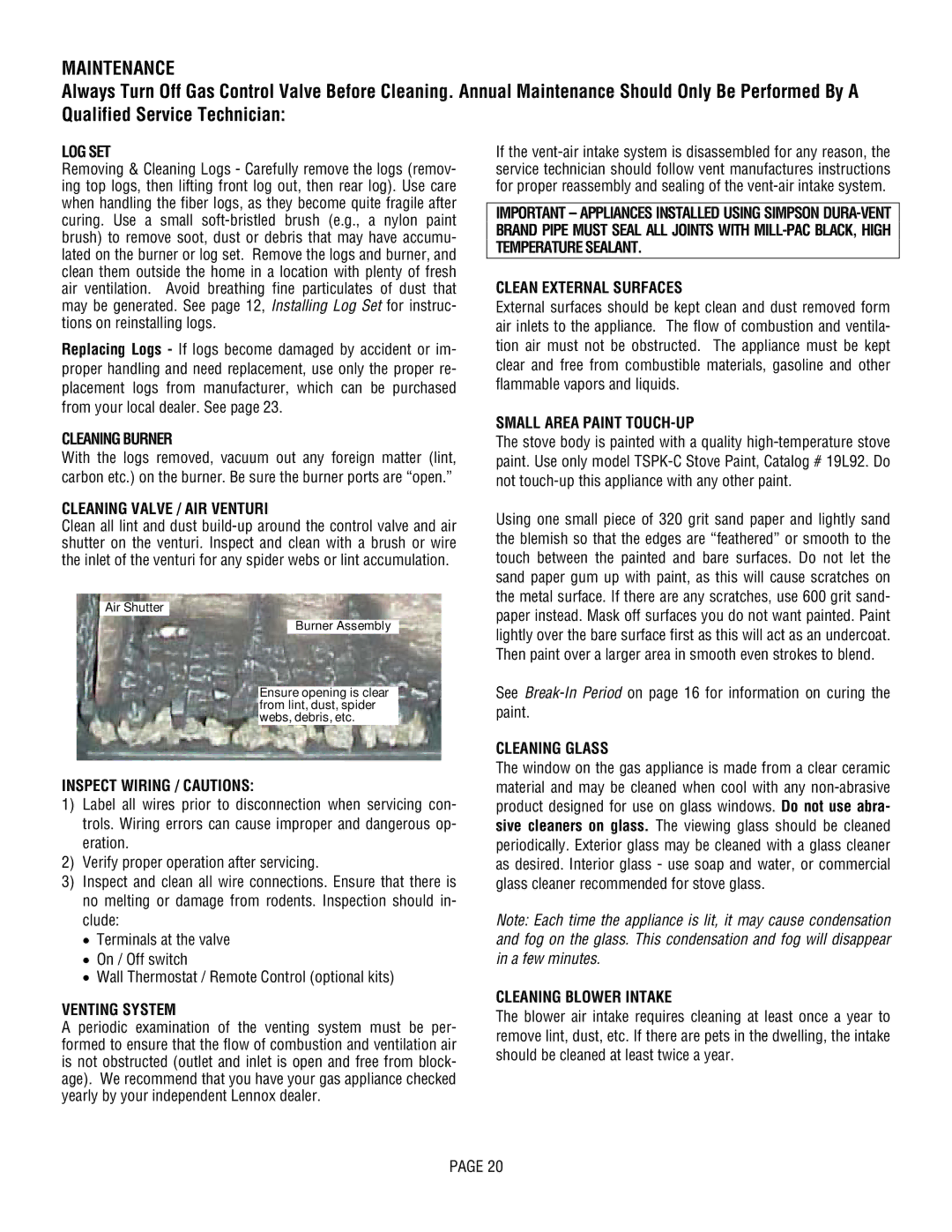L30 DVF-2 specifications
The Lennox Hearth L30 DVF-2 is an impressive direct vent gas fireplace known for its aesthetic appeal and innovative technologies. This model stands out in the realm of residential heating solutions, combining efficiency, performance, and design into a singular unit that enhances any living space.One of the primary features of the L30 DVF-2 is its efficient heating capacity. With a heating output of up to 30,000 BTUs, it effectively warms large areas while maintaining a steady and comfortable indoor climate. This model uses a direct vent system, allowing for clean and safe operation by taking air from the outside for combustion and expelling exhaust gases outside as well. This not only minimizes the risk of indoor air pollution but also allows for versatile installation options without the need for a traditional chimney.
In terms of design, the L30 DVF-2 offers a sleek and modern appearance, making it a stylish addition to any room. The fireplace features a large viewing area with a contemporary surround that can be customized in various finishes to match the décor of your home. Additionally, a variety of decorative options such as glass media and ceramic logs add to its aesthetic appeal, providing a beautiful flame presentation.
The Lennox L30 DVF-2 is also equipped with advanced technology, including an electronic ignition system that ensures reliable startups without requiring manual assistance. The fireplace can be conveniently controlled using a wall switch or remote control, allowing users to adjust the heat and flame settings with ease. The model is designed with a blower option that enhances heat distribution, helping to circulate warm air throughout the room more effectively.
Moreover, energy efficiency is a hallmark of the L30 DVF-2. Rated with a high Annual Fuel Utilization Efficiency (AFUE), this fireplace not only provides warmth but does so while minimizing energy consumption and utility costs. This efficiency extends the value of your investment by ensuring lower operating expenses over time.
Overall, the Lennox Hearth L30 DVF-2 combines cutting-edge technology, aesthetic versatility, and energy efficiency into a gas fireplace that offers both style and substance. It caters to modern homeowners looking to enhance their living spaces with a reliable and attractive heating solution.

